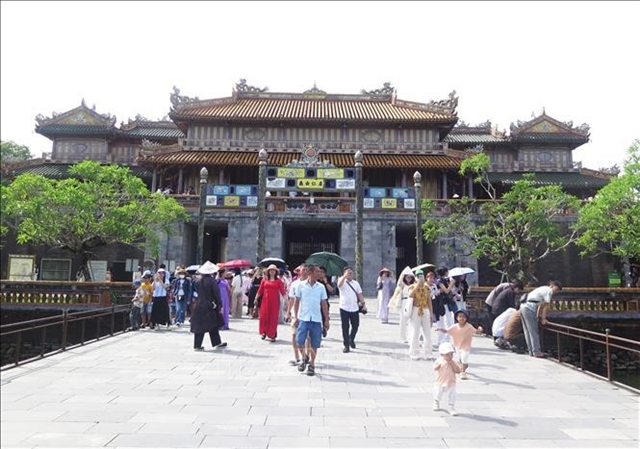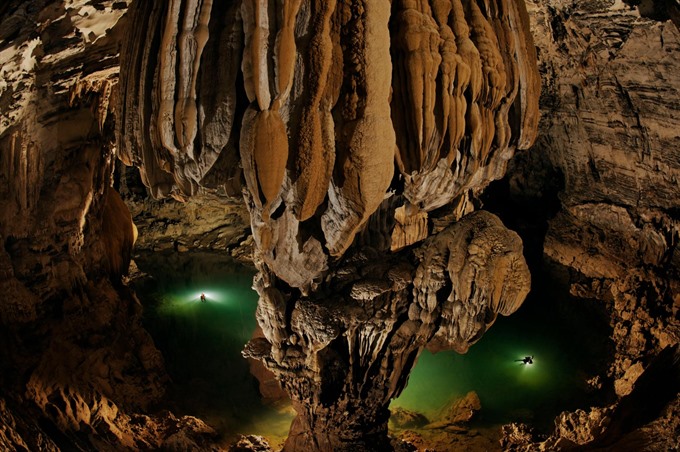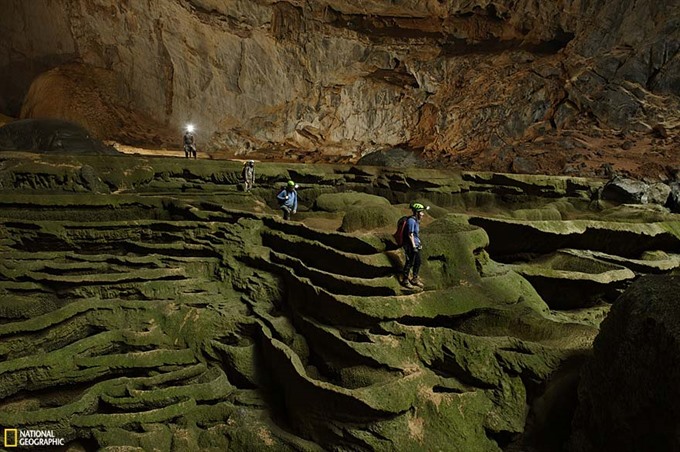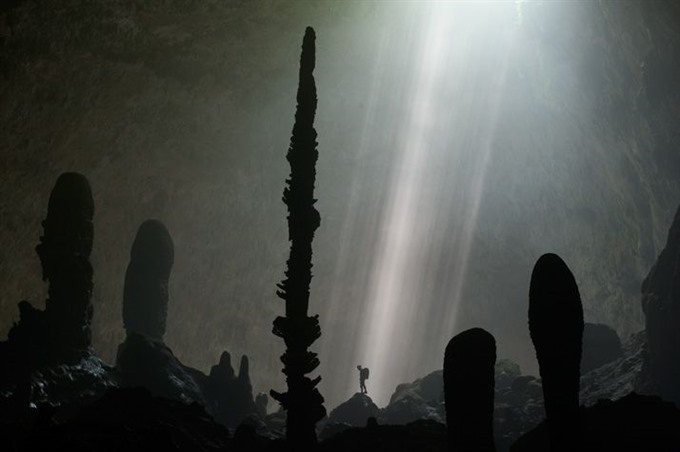 Life & Style
Life & Style

The largest cave in the world, Sơn Đoòng Cave, which is in Việt Nam’s central province of Quảng Bình, continues to receive attention from international press outlets, the provincial Department of Tourism announced.
 |
| Stone pillar: A giant column with explorers swimming through the depths of Hang Kén, one of 20 new caves discovered in 2011 in Việt Nam. The photo was taken by Carsten Peter. — Photo nationalgeographic.com |
QUẢNG BÌNH — The largest cave in the world, Sơn Đoòng Cave, which is in Việt Nam’s central province of Quảng Bình, continues to receive attention from international press outlets, the provincial Department of Tourism announced.
The UK’s The Telegraph released recently a list of “Amazing places discovered surprisingly recently” featuring 11 undiscovered places on the planet, including Sơn Đoòng Cave.
“Many miles of underground caverns are yet to be explored. Indeed, the subterranean record books are being rewritten on an almost annual basis and some of the biggest caves on the planet were only discovered relatively recently,” it wrote.
 |
| Exploring: Navigating an algae-covered, expedition organizers Deb and Howard Limbert lead the way across a sculpted cavescape in Việt Nam’s Sơn Đoòng Cave. The photo was taken by Carsten Peter. — Photo nationalgeographic.com |
According to the national British daily newspaper, the Krubera Cave, in the republic of Abkhazia in Georgia, is the deepest known cave and one of only two deeper than 2,000 metres.
“Of its eight miles (12.8km) of tunnels, the furthest from the surface (2,191 metres down) was discovered in 2007. It is no place for ordinary travellers.
“But Sơn Đoòng in Việt Nam, the largest known cave passage in the world by volume, which was found in 1990 and only fully explored in the last few years, can be seen by tourists.”
Alongside being listed as one of “Amazing places discovered surprisingly recently” by The Telegraph, three photos of the cave captured by German photographer Carsten Peter have been selected by the National Geographic as the best cave pictures.
 |
| Otherworldly: Streams of light illuminate stalagmites on the floor of Loong Con Cave in Việt Nam. Cavers call the area the Cactus Garden. The photo was taken by Carsten Peter. — Photo nationalgeographic.com |
The photos include one featuring an algae-covered maze inside Sơn Đoòng Cave with calcium-rich water overflowing from pools, and one depicting a giant column with explorers swimming through the depths of Kén, one of the new caves discovered in 2011 in Việt Nam. The last one depicts streams of light from the surface around stalagmites on the floor of Loong Con Cave, which cavers call “Cactus Garden”.
Sơn Đoòng Cave is in the heart of Phong Nha – Kẻ Bàng National Park in Quảng Bình. The cave was discovered by a local in 1991 and was first explored in 2009 by the British Cave Research Association. It has been open to the public since 2013.
The nine kilometre-long cave system, which extends through a mountain, was named one of the most captivating caves on earth by National Geographic.
Geologists say the cave formed two to five million years ago. It is roughly 200m high and 150m wide. The cave contains some of the tallest known stalagmites in the world, which are up to 70m tall. — VNS




